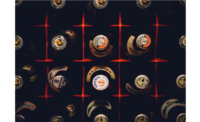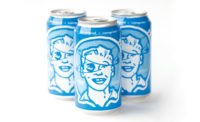PMMI Corner
Cans Lead as Packaging Innovations Drive Beverage Market Growth

Packaging innovations are helping to drive growth in the beverage market, according to the “Beverage Packaging and Innovation Trends” report published by PMMI, The Association for Packaging and Processing Technologies. The average annual growth rate for the beverage market is projected at 4.5 percent through 2028, going from $30.1 billion to $45.5 billion. While plastic bottles are projected to take over the beverage market, the most excitement in packaging innovation centers on aluminum cans and bottles.
Aluminum container designs can be made in a broader set of sizes and shapes than plastic or glass—for example, sizes ranging from 7.5 oz. to 32 oz., from bottles to cans and from fat to thin. In addition, as sustainability and convenience continue to gain importance to consumers, aluminum innovations are catching up with plastic regarding lighter weight and resealability options for both cans and bottles. Aluminum cans with resealable closures provide more portability and safety over glass.
Cans are also seeing new container enhancements including developments such as nitrogen charges to provide creamy foam in certain beverages. Can suppliers are also developing BPA-free internal coatings. Improvements in can graphics such as temperature and light-responsive inks, higher print quality and tactile effects are all helping cans compete with plastic bottles. Shrink sleeves are increasingly used on aluminum cans and bottles.
Convenience and portability remain key consumer trends in North America. Slim, tall cans have spread rapidly to carbonated soft drinks (CSD), energy drinks and sparkling water. They fit more easily in smaller hands, are more elegant than standard cans and stand out well on the shelf.
Consumers’ desire for natural and organic products has also driven the use of glass bottles and cartons, two containers with a healthier and environmentally friendly image among consumers, according to PMMI’s report. The craft brewery movement has seen change from glass bottles to aluminum cans due to perceived environmental benefits.
The premium and ultra-premium segments of just about every beverage category has experienced strong growth in recent years. Mid-tier brands, particularly in the spirits industry, have been refreshing their packaging to present a more premium image through enhanced labels, more sophisticated closures and eye-catching, shelf-ready packaging.
Although PET bottles are expected to increasingly dominate the beverage packaging industry, consumers have expressed reservations about the environmental effects and recycling challenges with this material. New technology was launched last year that can make PET bottles from 100 percent recycled PET resin with the same clarity and barrier properties as bottles made with 100 percent virgin PET.
Refrigerated sections in grocery stores are seeing rapid innovation of beverage packaging. These sections have been expanding to take on more juices, teas, kombuchas and other types of drinks. Retailers are also encouraging mixed flavor multi-packs to drive up register rings and expose consumers to a wider range of products to keep them coming back for more.
To keep up with the latest packaging innovations in the beverage market, look to PACK EXPO East (April 16-18; Pennsylvania Convention Center, Philadelphia). The show convenes an expected 6,000 attendees and 400 suppliers of advanced packaging equipment, automation, robotics and controls, materials, containers, printing and labeling technologies. This vast network includes managers, engineers, brand managers, package developers, sales and marketing professionals and others looking to keep up with technological change, improve production and enhance their brand. Attendees can also benefit from exhibitor demonstrations and free 30-minute seminars on trends, thought leadership and innovations presented by industry professionals.
For more information and to register online, visit packexpoeast.com or pmmi.org.
Looking for a reprint of this article?
From high-res PDFs to custom plaques, order your copy today!







